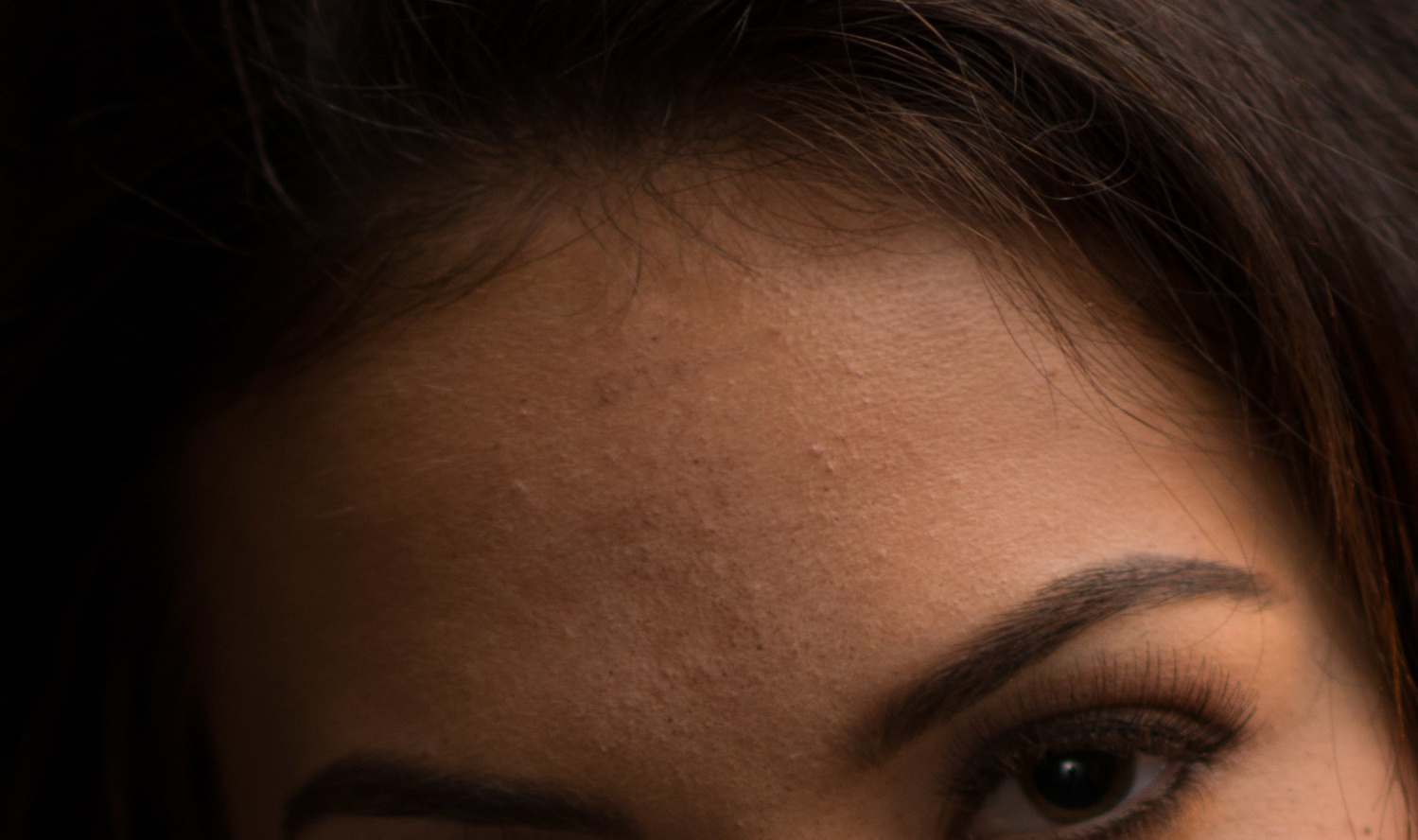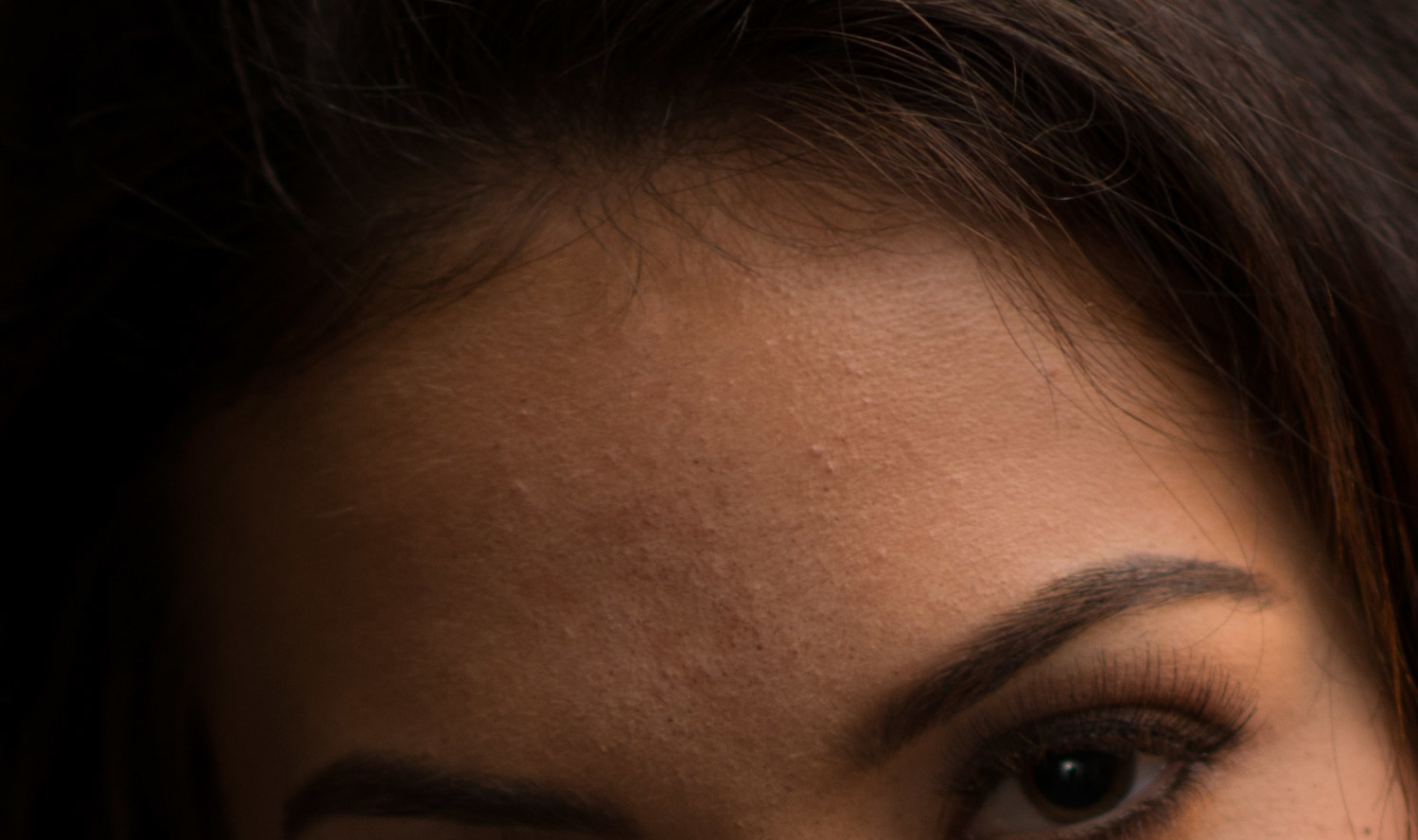Often when retouching skin we want to clone away high contrast blemishes without also cloning the texture surrounding it. Advanced techniques such as using frequency separation can be a great help to make this sort of thing easier by separating detail from broader tones. One often overlooked technique that does a great job of preserving mid-tone detail while cloning is to leverage the power of blend modes to target only bright tones or dark tones when cloning.
Take, for example, a situation similar to the one below where you want to remove an annoying strand of hair without actually harming the skin texture or tone around it. If you use a broad clone brush the clone looks ok but also tends to look a bit strange unless you spend time being very precise. The spot healing brush often can do a decent job of it unless you are very close to an unwanted texture such as the hairline, in which case the spot healing brush may pick up unwanted texture creating an odd effect.

 Instead of spending a large chunk of time precisely cloning each strand of hair, we can instead leverage a blend mode for our clone tool to target only the darker tones. When choosing the blend mode, think about if the desired blemish needs to be made darker or lighter to match the surrounding tone and select either the lighten or darken blend modes respectively. In this case, the strand of hair is darker than the surrounding skin tone so the lighten blend mode is used. Then just clone as you normally would. You will quickly find that you are able to clone away the darker strands of hair while leaving light and mid-tones unaffected. The opposite is true with the darken blend mode. If you find yourself in a situation where you want to remove unwanted highlighted such as bumps on the skin picking up light you can swap over to the darken blend mode to target only highlights. Below you can see the difference between using a normal blend mode and the lighten blend mode while doing a quick clone of the unwanted hair.
Instead of spending a large chunk of time precisely cloning each strand of hair, we can instead leverage a blend mode for our clone tool to target only the darker tones. When choosing the blend mode, think about if the desired blemish needs to be made darker or lighter to match the surrounding tone and select either the lighten or darken blend modes respectively. In this case, the strand of hair is darker than the surrounding skin tone so the lighten blend mode is used. Then just clone as you normally would. You will quickly find that you are able to clone away the darker strands of hair while leaving light and mid-tones unaffected. The opposite is true with the darken blend mode. If you find yourself in a situation where you want to remove unwanted highlighted such as bumps on the skin picking up light you can swap over to the darken blend mode to target only highlights. Below you can see the difference between using a normal blend mode and the lighten blend mode while doing a quick clone of the unwanted hair.
Conclusion
Clone blend modes are a great way to make your retouching job a little bit easier. They are fantastic for when you want to target only highlights or shadows while cloning and work fantastic when used in conjunction with advanced techniques such as frequency separation. Another great use for clone blend modes is when you want to preserve desirable blemishes while cleaning up unwanted ones. An example would be if a model had beautiful dark freckles, you don't want to clone away the freckles, but you do want to still clean up the skin. In this case, by using a darken blend mode the darker freckles won't be harmed while you eliminate highlights on any unwanted bumps.








This is very true. I've learnt this from Natalia Taffarel, never stopped using it since then. To me the results are more pleasing :)
Yep, sometimes it looks more easier with this technique than FS.